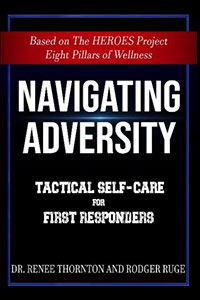[Sponsored] Consequences of Doing the Right Thing
When you decided to join the dispatch and 9-1-1 community, the passion you brought into the job was so closely tied to your purpose that you were overflowing with enthusiasm, optimism, and self-confidence. These powerful feelings increase with early training, so by the time you’re ready to answer that first call, you’ve invested in the wellness capital needed to hit give help and hope to the person on the other end of the line.
One call to the next, you rush through your shift, not realizing the impact the lack of closure is having on your internal wellspring of positivity. Yet it begins: the call comes in, you respond with a fresh load of positivity and concern, pouring out your love in service to your community. You’re doing the right thing, so why do you feel so depleted?
Serving is giving of your own resources to someone who needs them more. The more you give, the less you have.
Which means, the better you are at your job, the worse you’re going to feel.
That is, until you refuel the wellness capital you’ve lost along the way. Enthusiasm, optimism, and self-confidence are built. In fact, they’re the natural result of intentional self-care and dedication to your craft.
Think back to a time in your life when you were healthy, happy, and filled with hope for the future. You didn’t get there by accident! The investments you made back then are even more important as you age, which means you’re going to have to be even more mindful of your daily regimen and the impact it’s having on your mind, body, spirit, wallet, heart, relationships, career, and attitude. Today, as a leader, you must consider more than your own self-care regimen. You have to encourage your staff to see to theirs, too. Equally challenging is budgetary constraints. How do you quantify the training expense as an investment rather than a wasted cost?
When I started this work twelve years ago, I figured wellness was best realized by focusing on the body. After all, your body is a status symbol. I was still young and had no idea that there’d come a day when just rolling over in bed was hazardous to my back.
Age, time in the profession, genetics, life’s challenges…contrary to popular belief, they do not impact our ability to build wellness capital, but they do play a role in how we go about it. Every person’s circumstance is different, so wellness training must meet them where they are. It has to be personal. It has to be thorough. It has to be approachable.
And it must be an investment!

Enter Navigating Adversity: Tactical Self-Care for First Responders (and their loved ones, too!).
- Begins & Ends with a 100% Confidential
Self-Assessment - Personal Learning Experience
- Fully Online for Privacy & Comfort
- Mentored by First Responders who’ve Been There
- Tool-Forward, Focused on Stacking Healthy Habits
- Establishes a Foundation for Lifelong Wellness
- Encourages Work/Life Integration
- 24 Continuing Education Credits
And, if you train at least 40% of your workforce, it includes data on your organization’s health, capital resources, and adversities. Stop paying for training that has no proof that it does what it says it will do. Instead, invest in a data-driven, validated resource proven to build wellness and increase organizational resilience.
For more information about individual pricing, course start dates, organizational wellness scorecards, and workforce training rates, visit www.navigatingadversity.com or send us an email at contact@pathfinderresilience.com.
Live Life Intentionally!
Content sponsored by:
Dr. Renee Thornton
Director of Training & Research
Creator, the HEROES Project
Pathfinder Resilience

